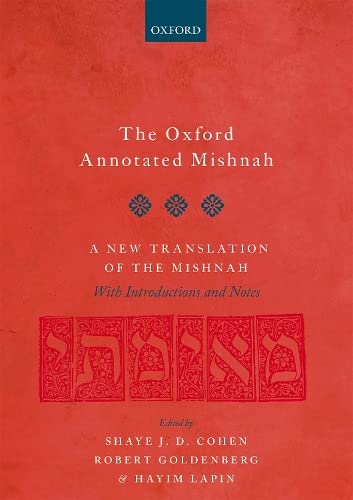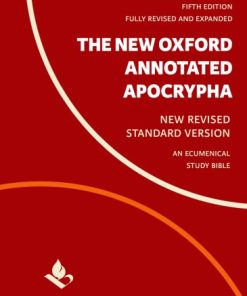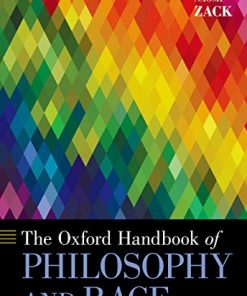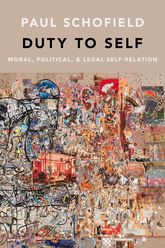The Oxford Annotated Mishnah Littauer Professor Of Hebrew Literature And Philosophy 1st edition by Shaye Cohen 0192647856 9780192647856
$50.00 Original price was: $50.00.$25.00Current price is: $25.00.
The Oxford Annotated Mishnah Littauer Professor Of Hebrew Literature And Philosophy 1st edition by Shaye J D Cohen – Ebook PDF Instant Download/DeliveryISBN: 0192647856, 9780192647856
Full download The Oxford Annotated Mishnah Littauer Professor Of Hebrew Literature And Philosophy 1st edition after payment.

Product details:
ISBN-10 : 0192647856
ISBN-13 : 9780192647856
Author: Shaye J D Cohen
The Mishnah is the foundational document of rabbinic law and, one could say, of rabbinic Judaism itself. It is overwhelmingly technical and focused on matters of practice, custom, and law. The Oxford Annotated Mishnah is the first annotated translation of this work, making the text accessible to all. With explanations of all technical terms and expressions, The Oxford Annotated Mishnah brings together an expert group of translators and annotators to assemble a version of the Mishnah that requires no specialist knowledge.
The Oxford Annotated Mishnah Littauer Professor Of Hebrew Literature And Philosophy 1st Table of contents:
Volume 1: The Oxford Annotated Mishnah: A New Translation of the Mishnah With Introductions and Note
Volume 1: Copyright
Dedication
Acknowledgements
Contents
List of Figures
List of Contributors
Introduction
What Is the Mishnah?
What the Mishnah Is and What the Mishnah Is Not
How to Read the Mishnah
How to Read This Translation
The Rev. Herbert Danby
The Mishnah
Order of Zera’im
Tractate Berakhot
Introduction
Overview
Structure and Organization of the Tractate
Relationship to Scripture
Main Ideas
Special Notes for the Reader
Chapter One
1:1–3 The Proper Time and Posture for the Recitationof the Shema
1:4–5 Blessings before and after the Shema
Chapter Two
2:1–4 Intention and Attention Required for the Recitationof the Shema
2:5–8 Exemptions from the Requirement to Recite the Shema
Chapter Three
3:1–3 Exemptions from the Obligation to Recite the Shema
3:4–6 Exemptions Caused by Seminal Emission
Chapter Four
4:1–7 The Recitation of the Prayer
Chapter Five
5:1 Proper Concentration in Prayer
5:2 Occasional Insertions in the Prayer
5:3–5 Fluency vs. Error or Confusion in The Prayer
Chapter Six
6:1–7 Blessings over Food
6:8 The Three Blessings after a Meal
Chapter Seven
7:1–5 The Invitation to Recite the Three Blessings after a Meal
Chapter Eight
8:1–8 Disputes between the Houses of Shammai and Hillel about Proper Procedure at Meals
Chapter Nine
9:1–4 Blessings to be Recited upon Special Occasions
9:5 Conclusion
Tractate Pe’ah
Introduction
Overview
Structure and Organization of the Tractate
Main Ideas
Relationship to Scripture
Special Notes for the Reader
Chapter One
1:1–3 Laws of Pe’ah: Quantity and Location
1:4–6 Laws of Pe’ah: Produce that is Liable and Exempt
Chapter Two
2:1–4 Definition of Grain Fields and Orchards Liable to Pe’ah
2:5–6 Ambiguous Cases: Borders of a Field with Mixed Crops
2:7–8 Ambiguous Cases: A Field Reaped by Others
Chapter Three
3:1–5 Ambiguous Cases: Fields Harvested Piecemeal
3:6–8 Size of a Field Liable to Pe’ah
Chapter Four
4:1–5 Collection of Pe’ah
4:6–9 Miscellaneous Laws on Poor Offerings and Property Ownership
4:10–5:3 Laws of Gleanings
Chapter Five
5:4–6 Collection of Poor Offerings
5:7–8 Laws of Forgotten Things: Definition
Chapter Six
6:1–3 Disputes on Ambiguous Cases
6:4 Biblical Basis
6:5–11 Ambiguous Cases: Produce Intentionally Left Behind
Chapter Seven
7:1–2 Olives
7:3 Poor Offerings from the Vineyard: Separated Grapes
7:4–8 Poor Offerings from the Vineyard: Defective Clusters andForgotten Grapes
Chapter Eight
8:1–4 Miscellaneous Laws on All Poor Offerings
8:5–6 The Poor Tithe
8:7–9 Who is Poor?
Tractate Demai
Introduction
Overview
Organization and Structure of the Tractate
Relationship to Scripture
Special Notes for the Reader
Chapter One
1:1–2:1 Leniencies Pertaining to Demai
Chapter Two
2:2–3 Paired Social Categories: Trustworthy Tithers andObservers of Purity Laws
2:4–5 Tithing Produce When Selling in Bulk
Chapter Three
3:1–6 Tithing Produce That Will Be Given to Others
Chapter Four
4:1–2 Relying on the Testimony of Untrustworthy Persons
4:3–4 Tithing
4:5–7 Credibility of the Testimony of Untrustworthy and Unknown Persons
Chapter Five
5:1–2 Procedures for Separating Tithes from Produce Suspected of Being Untithed
5:3–11 Separating Tithes from One Category of Produce for Another
Chapter Six
6:1–12 Tithing Produce that will be Given to Others: The Case of Shared Ownership
Chapter Seven
7:1–5 Designating Tithes in Advance of the Sabbath
7:6–8 Tithes from One Category of Produce for Another; Mixtures
Tractate Kilayim
Introduction
Overview
Structure and Organization of the Tractate
Main Ideas
Relationship to Scripture
Special Notes for the Reader
Chapter One
1:1–6 Mixed Species
1:7–9 Grafting and Cross-Fertilizationof Trees and Vegetables
Chapter Two
2:1–2 Amount of Foreign Species Needed to Create Mixed Species
2:3–5 Changing the Crop Composition of a Field
2:6–3:7 Prohibited and Permitted Mixed Plantings
Chapter Three
Chapter Four
4:1–4 Unused Space in a Vineyard
4:5–7 Definition of a Vineyard
4:8–5:4 Appropriate Space between Rows
Chapter Five
5:5–8 Consequences of Mixed Species in a Vineyard
Chapter Six
6:1–9 Arbors and Trellises
Chapter Seven
7:1–2: Extending Vines
7:3 A Summary Paragraph
7:4–8: Miscellaneous Rules
Chapter Eight
8:1 Summary of the Different Kinds of Mixed Species
8:2–6 Mixed Species of Animals
Chapter Nine
9:1–10 Mixed Species of Clothing
Tractate Shevi’it
Introduction
Overview
Relationship to Scripture and Main Ideas
Structure and Organization of the Tractate
Special Notes for the Reader
Chapter One
1:1–5 Plowing the Field before the Seventh Year: Trees
1:6–8 Plowing the Field before the Seventh Year: Saplings
Chapter Two
2:1 Plowing the Field before the Seventh Year: Grain Field
2:2–5 Other Labors before the Seventh Year: Labors Permitted until the New Year
2:6–10 Other Labors before the Seventh Year: Sixth-Year Plants Considered Seventh-Year Produce
Chapter Three
3:1–4 Maintenance of Fields and Trees during the Seventh Year: Fertilization
3:5–10 Maintenance of Fields and Trees during the Seventh Year: Removing Stones from the Field
Chapter Four
4:1–3 Maintenance of Fields and Trees during the Seventh Year: Mutual Favors
4:4–6 Maintenance of Fields and Trees during the Seventh Year: Trees and Wood
4:7–10 Development of Seventh-Year Fruits: Stages of Development
Chapter Five
5:1 Development of Seventh-Year Fruits: Fruits that Begin to Grow during the Seventh Year but Ripen
5:2–5 Development of Seventh-Year Fruits: Arum
5:6–9 Items that May Not Be Sold or Lent during the Seventh Year
Chapter Six
6:1–2 Seventh-Year Laws Outside the Land of Israel
6:3–4 More on Vegetables after the Seventh Year
6:5–6 Export and Import of Sanctified Produce
Chapter Seven
7:1–3 Seventh-Year Produce and Its Conversion into Money: Crops Whose Monetary Exchange Is Subject
7:3 cont.–4 Seventh-Year Produce and Its Conversion into Money: Trade in Seventh-Yearand Other San
7:5–7 Seventh-Year Produce and Its Conversion into Money: Other Crops Whose Monetary Exchange Is S
Chapter Eight
8:1–2 Appropriate Use of Seventh-Year Produce: Principles
8:3–5 Appropriate Use of Seventh-Year Produce: Selling and Paying with Seventh-Year Produce
8:6–7 Appropriate Use of Seventh-Year Produce: Preparation of Seventh-Year Fruits
8:7 cont.–11 Appropriate Use of Seventh-Year Produce: Illicit Use of Seventh-Year Money and Its Co
Chapter Nine
9:1 Removal of Seventh-Year Fruit: Ownerless Species and Aftergrowths
9:2–3 Removal of Seventh-Year Fruit: Territories of Removal
9:4–7: Removal of Seventh-Year Fruit: The Period of Removal
9:8–9 Removal of Seventh-Year Fruit: The Manner of Removal
Chapter Ten
10:1–2 Debt Relief in the Seventh Year: Debts That Are Not Released by the Seventh Year
10:3–5 Debt Relief in the Seventh Year: The Prozbul Document
10:6–7 Debt Relief in the Seventh Year: Securing the Prozbul
10:8–9 Debt Relief in the Seventh Year: Repaying Loans in the Seventh Year and on Other Occasions
Tractate Terumot
Introduction
Overview
Structure and Organization of the Tractate
Main Ideas
Relationship to Scripture
Special Notes for the Reader
Chapter One
1:1–3 People Whose Separation of Terumah Is Invalid Even After the Fact
1:4–5 Other Invalid Terumah Separations
1:6–2:1 Terumah Separations Valid After the Fact
Chapter Two
2:2–3 Consequences of Accidental and Purposeful Violation
2:4–6 Terumah Separation from One Species for Another
Chapter Three
3:1–2 Doubtful Terumah
3:3–4 Separation of Terumah by Multiple Owners
3:5 Verbal Designation of Terumah
3:6–7 Proper Sequence in the Separation of Terumah
3:8 Improper Verbal Designation
3:9 The Status of Non-Israelitesvis-à-visTerumah
Chapter Four
4:1–2 Partial Terumah Separation or Tithing
4:3–6 Terumah Separation Amounts and Intention
4:7 Neutralization of Terumah
4:8–13 Neutralization of Discrete Objects
Chapter Five
5:1–4 Mixtures of Terumah and Nonsacral Produce
5:5–6 Produce Removed from Terumah Mixtures
5:7–8: Multiple Terumah Mixings
5:9 Post Facto Changes
Chapter Six
6:1–4 Unintentional Consumption of Terumah
6:5–6 Paying for the Unauthorized Consumption of Terumah
Chapter Seven
7:1–4 Cases That Do Not Require the Added Fifth
7:5–7 Cases of Uncertainty
Chapter Eight
8:1–3 Actions That Were Begun Permissibly but Become Prohibited
8:4–7 Uncovered Liquids and Snake Venom
8:8–11 Impure Terumah
8:12 A Group of Women Threatened with Impurity
Chapter Nine
9:1–6 Terumah That Has Been Planted
9:7 Weeding with a Non-Jew
Chapter Ten
10:1–4 Terumah Which Imparts Its Flavor to Other Fo
10:5–6 The Special Case of Fenugreek
10:7–12 Permitted Foods Combined with Prohibited Foods
Chapter Eleven
11:1–3 Liquids Containing Terumah
11:4–5 Terumah Produce Not Normally Eaten
11:6–8 Drips and Spills
11:9 Terumah Vetches
11:10 Lighting a Lamp with Oil-That-Is-To-Be-Burned
Tractate Ma’aserot
Introduction
Overview
Structure and Organization of the Tractate
Main Ideas
Relationship to Scripture
Special Notes for the Reader
Chapter One
1:1 General Rules Concerning Tithes
1:2–3 Produce That Is Eaten Only in Its Later Stage of Growth
1:4 Produce That Is Eaten at an Early Stage of Growth
1:5–8 When Processing Is Complete and Produce Can No Longer Be Snacked on Without Tithing
Chapter Two
2:1–3 Bringing Produce into a “House” Causes It to Be Liable for Tithes
2:4 Separating Terumah before Tithes Have Been Removed
2:5–8 Purchasing Produce Causes It to Be Liable for Tithes
Chapter Three
3:1–3 Produce Eaten by Workers
3:4 Found Produce
3:5–9 Produce Brought into a Courtyard
3:10 Miscellaneous Rules about Liability to Tithing
Chapter Four
4:1–5Actions That Make Produce Liable for Tithes
4:6 Which Parts of a Plant Must Be Tithed
Chapter Five
5:1–2 The Tithing of Saplings
5:3–4: Selling Produce That Needs to Be Tithed
5:5 One Who Purchases Land in Syria
5:6 A Drink Made from Used Grape Skins
5:7 Grain in Anthills
5:8 Produce from Outside the Land of Israel
Tractate Ma’aser Sheni
Introduction
Overview
Structure and Organization of the Tractate
Main Ideas
Relationship to Scripture
Chapter One
1:1–2 The Prohibition of Selling Second-TitheProduce
1:3–7 The Status of Food Bought with Second-TitheMoney
Chapter Two
2:1–4 What May Be Done with Second-TitheProduce
2:5–10 Second-TitheCoins
Chapter Three
3:1 Dividing Second Tithe
3:2 Buying Terumah with Second-TitheCoins
3:3–6 Second-TitheMoney and Produce in Jerusalem
3:7–9 Inside and Outside Jerusalem
3:10–11 Food Purchased with Second-TitheMoney
3:12–13 Containers of Second-TitheWine
Chapter Four
4:1–8 Redeeming Second-TitheProduce
4:9–12 Coins and Produce Which Might Be Second Tithe
Chapter Five
5:1–5 The Laws of the Fourth-YearVineyard
5:6–9: The Removal of Tithes
5:10–15 The Confession Over Tithes
Tractate Hallah
Introduction
Overview
Structure and Organization of the Tractate
Main Ideas
Relationship to Scripture
Chapter One
1:1–2 The Definition of Grain
1:3–8 Liability to the Dough Offering
1:9 Laws Common to Dough Offering and Terumah
Chapter Two
2:1–2 Produce Grown Outside the Land of Israel
2:3–8 Separating the Dough Offering
Chapter Three
3:1–6 Rolling Out the Dough
3:7–10 Mixtures
Chapter Four
4:1–5 Different Batches of Dough
4:6 Dough Offering Separated from Doubtfully Tithed Produce
4:7–11 Dough Offering Outside the Land of Israel
Tractate Orlah
Introduction
Overview
Structure and Organization of the Tractate
Main Ideas
Relationship to Scripture
Chapter One
1:1–9 Which Trees Are Subject to the Laws of Orlah
Chapter Two
2:1–17 Mixtures of Permitted and Forbidden Substances
Chapter Three
3:1–8 Making Use of Orlah Produce
3:9 The Status of Doubtful Orlah outside the Land of Israel
Tractate Bikkurim
Introduction
Overview
Structure and Organization of the Tractate
Main Ideas
Relationship to Scripture
Special Notes for the Reader
Chapter One
1:1–3 Those Who Do Not Bring the Firstfruits
1:4–9 Those Who Bring the Firstfruits but Do Not Recite the Declaration
1:10–11 Those Who Bring the Firstfruits and Recite
Chapter Two
2:1–5 Firstfruits, Terumah, and Second Tithe
2:6–7 Additional Comparisons of Categories
2:8–11 The Koy
Chapter Three
3:1–8 Bringing the Firstfruits to the Temple
3:9–11 Supplementary Fruits
3:12 Firstfruits as Property
Chapter Four
4:1–5 The Androgynos
Order of Mo’ed
Tractate Shabbat
Introduction
Overview
Structure and Organization of the Tractate
Main Ideas
Relationship to Scripture
Special Notes for the Reader
Chapter One
1:1 Transporting from Inside to Outside and Outside to Inside on the Sabbath
1:2–11 Permitted and Prohibited Activities on Friday Near the Arrival of the Sabbath
1:5–8 Debates between the Houses of Shammai and Hillel
1:9–11 Agreement between the Houses
Chapter Two
2:1–4 Lighting a Lamp for the Sabbath
2:5 Extinguishing a Lamp on the Sabbath
2:6–7 Two Sayings about Three Things, One of Which is Lighting a Lamp for the Sabbath
Chapter Three
3:1–2 Keeping Cooked Food Hot in a Stove or Oven
3:3 Lightly Cooking an Egg on the Sabbath
3:4–5 Hot Water on the Sabbath
3:5 cont. Hot Food
3:6 Preparing a Lamp and Its Appurtenances before the Sabbath
Chapter Four
4:1–2 Keeping Cooked Food Hot by Covering
Chapter Five
5:1–2 What an Animal May “Wear” on the Sabbath
5:3–4 What an Animal May Not “Wear” on the Sabbath
Chapter Six
6:1–4 What a Person May Not Wear on the Sabbath
6:5–10 What a Person May Wear on the Sabbath
Chapter Seven
7:1–3 General Rules: the Thirty-NinePrimary Labors
7:4 Taking Out Foodstuffs, Animal and Human
Chapter Eight
8:1 Taking Out Liquids
8:2–7 Taking Out Various Items, Neither Food nor Liquid
Chapter Nine
9:1–4 Seven Laws for which Scripture Provides Not a Proof but an Indication
9:5–7 Taking Out Various Items
Chapter Ten
10:1 Culpability for Transporting an Amount Less Than the Statutory Minimum
10:2–5 Culpability for Transportation is Incurred Only if an Object Is Carried in Its Usual Manner
10:6 Other Acts that Incur No Penalty if Performed in an Unusual Manner
Chapter Eleven
11:1–6 Throwing from One Domain to Another
Chapter Twelve
12:1 Building
12:2 Labor in the Field
12:3–6 Writing
Chapter Thirteen
13:1–4 Weaving, Sewing, Tearing, and Related Activities
13:5–14:1 Trapping
Chapter Fourteen
14:2–4 Compounding Medicines and Other Preparations
Chapter Fifteen
15:1–3 Tying and Untying, Folding and Spreading
Chapter Sixteen
16:1–7 Saving from Fire
16:8 The Labor of Gentiles
Chapter Seventeen
17:1–18:2 Utensils and Foodstuffs That May Be Moved or Carried on the Sabbath
Chapter Eighteen
18:3–19:6 Birth and Circumcision on the Sabbath
Chapter Nineteen
Chapter Twenty
20:1–3 Pouring on Water, Soaking in Water
20:3 cont.–5 Sifting and Moving Straw
Chapter Twenty-One
21:1–3 Moving Items That Have No Permitted Use on the Sabbath
Chapter Twenty-Two
22:1–4 Preparing Food on the Sabbath
22:5–6 In the Bath
Chapter Twenty-Three
23:1–2 Guests and Food
23:3–5 Preparing on the Sabbath for after the Sabbath
Chapter Twenty-Four
24:1–4 Care of Animals
24:5 Annulling Vows, Plugging Holes, and Taking Measurements
Tractate Eruvin
Introduction
Overview
Main Ideas
Relationship to Scripture
Special Notes for the Reader
Chapter One
1:1–2 Adjusting the Entry to an Alleyway for the Sabbath
1:3–5 The Crossbeam for the Entry to the Alleyway
1:6–7 The Sidebeams for the Entry to the Alleyway
1:8–10 Making Sabbath Boundaries for a Traveling Encampment
Chapter Two
2:1–4 Sabbath Enclosure for Public Wells
2:5 A Related Ruling by R. Judah b. Bava
2:6 A Collection of R. Eliezer’s Teachings
Chapter Three
3:1–2 Foods that Are Valid for Eruv
3:3–4 Places Where the Eruv Food May Be Deposited
3:5–7 Conditional Eruv
3:8–9 Other Rules for Two-Day Festivals
Chapter Four
4:1–3 Permissible Movement When Outside the Sabbath Limit
4:4–6 Permissible Movement When Overtaken by the Sabbath While Traveling
4:7–8 How to Determine One’s Sabbath Place While Traveling
4:9 The Essence of the Eruv of Distance
4:10–11 Additional Rules for Returning to One’s Original Sabbath Domain after Leaving
Chapter Five
5:1 Mapping a Town’s Sabbath Boundary
5:2–3 The Additional Peripheral Area for Towns and Villages
5:4–5 The Measurement of Two Thousand Cubits
5:6 A Ruling about the Eruv of Courtyards
5:7 Arranging an Eruv of Distance While Still Outside the Town
5:8–9 The Distance One May Walk When an Eruv Is Placed in a Town
Chapter Six
6:1–2 When Living in a Mixed Neighborhood
6:3–4 How to Merge the Neighborhood if Someone Forgot to Join the Eruv
6:5–7 Whether Different Types of Preexisting Associations Need to Prepare an Eruv
6:8–10 The Relationship between Adjoining Courtyard Communities
Chapter Seven
7:1–5 When to Consider Two Adjacent Courtyards as One
7:6–8 How a Partnership for the Alleyway is Prepared
7:9–10 The Parallel between Eruv and Partnership Preparation
7:11 Whether Money May Count as a Contribution to the Joined Eruv
Chapter Eight
8:1–2 The Requirements for an Eruv of Distance
8:3 Allocating Structural Elements in the Shared Courtyard
8:4 The Kind of Courtyard Structures to Be Considered Proper Residences
8:5 Whether an Empty Residence Has to Be Considered for Eruv Purposes
8:6–8 Drawing Water on the Sabbath in Courtyards
8:9–11 Rules for Pouring Out Water into Courtyards on the Sabbath
Chapter Nine
9:1–3 Roofs as Sabbath Domain
9:4 The Status of High Structures on the Sabbath
Chapter Ten
10:1–3 Retrieving Valuable Objects from Beyond the Sabbath Limit
10:3 Retrieving a Sacred Scroll That Slipped Out of One’s Hands
10:4–7 Activities across the Boundary between Private and Public Domains
10:8–10 Partitions, Stopgaps, and Doors
10:11–15 Rules Pertaining to the Temple; Concluding Homily
Tractate Pesahim
Introduction
Structure and Organization of the Tractate
Main Ideas
Overview
Chapter One
1:1–3 The Search for Leaven
1:4–2:4 The Elimination of Leaven (and Other Burnings)
Chapter Two
2:5–3:5 Passover Foods: Obligatory and Permitted
Chapter Three
3:6–8 The Elimination of Leaven: The Sabbath and Last-Minute Concerns
Chapter Four
4:1–9 Local Customs
Chapter Five
5:1–10 The Passover Sacrifice
Chapter Six
6:1–6 The Passover on Sabbath
Chapter Seven
7:1–3 Roasting the Passover
7:4–12 Defiled Passovers
7:13–8:8 Consuming the Passover
Chapter Eight
Chapter Nine
9:1–3 First and Second Passover
9:4–5 Other Passovers
9:6–11 Passovers That Cannot Be Offered
Chapter Ten
10:1–7 The Passover Meal
10:8–9 After the Passover
Tractate Sheqalim
Introduction
Overview
Structure and Organization of the Tractate
Main Ideas
Relationship to Scripture
Special Notes for the Reader
Chapter One
1:1–2 Public Maintenance during the Month of Adar
1:3–5 Collection of the Sheqel Offering
1:6–7 Assessment of a Fee for the Exchange of Currency
Chapter Two
2:1–2 Exceptional Circumstances of Collection
2:3–5 Allocation of Funds from Excessive Offerings
Chapter Three
3:1–4 Removal of the Collected Sheqalim
Chapter Four
4:1–2 What Was Done with the Collected Funds?
4:3–5 Use of Surplus Funds
4:6–8 Use of Sanctified Personal Belongings
4:9 Setting Prices for Temple Goods
Chapter Five
5:1–2 List of Temple Appointments
5:3–5 Temple Procedures for Procuring Libations
5:6 Temple Chambers
Chapter Six
6:1–4 The Number Thirteen in the Temple
Chapter Seven
7:1–2 Proper Allocation of Found Coins
7:3–5 Found Meat and Livestock
7:6–7 Seven Court Ordinances Regarding Sacrifices
Chapter Eight
8:1–3 Purity Status of Objects Found in Jerusalem
8:4–5 Temple Curtains
8:6–7 Disposal of Impure Temple Meat
8:8 Placement of Sacrificial Limbs
8:8 cont. Sanctifying Goods without a Temple
Tractate Yoma
Introduction
Overview
Structure and Organization of the Tractate
Relationship to Scripture
Main Ideas and Assumptions
Special Notes for the Reader
Chapter One
1:1–7 The High Priest Is Prepared for the Day of Atonement
1:8–2:1 The Clearing of the Ashes
Chapter Two
2:2–4 The Four Lots
2:5–7 How Many Priests Are Required for the Temple Sacrifices?
Chapter Three
3:1–3 Final Preparations before the Continual Offering Service
3:4–5 The High Priest Performs the Morning Continual Offering
3:6–9 Preparing the Purgation Offerings
3:10–11 Famous and Infamous Temple Personnel
Chapter Four
4:1–3 Further Preparations for the Purgation Offering
4:4–6 Distinctions between the Day of Atonement and the Rest of the Year
Chapter Five
5:1–2 The Incense Offering
5:3–6 Blood Manipulations
Chapter Six
6:1–8 The He-Goat Offerings
Chapter Seven
7:1–2 The Reading of the Torah
7:3–4 Completing the Service
7:5 The Priestly Vestments
Chapter Eight
8:1–5 Observance of the Day of Atonement: Restrictions and Exceptions
8:6–7 Extenuating Circumstances That Allow for Violation of the Law
8:8–9 Repentance and Atonement
Closing Homily
Tractate Sukkah
Introduction
Overview
Organization and Structure of the Tractate
Relationship to Scripture
Main Ideas
Chapter One
1:1 Minimum and Maximum Dimensions of the Sukkah
1:2–4 The Sukkah’s Roof and Walls
1:5–8 The Use of Bundles, Boards, and Beams for the Sukkah Roofing
1:9–11 Walls That Do Not Touch the Ground or the Roof
Chapter Two
2:1 Sleeping in the Sukkah
2:2–4 Sukkot That Are Propped Up or Rest on Other Objects
2:4 cont.–5 Men Exempt from the Commandment of Dwelling in the Sukkah, and Food Exempt from Being
2:6 The Number of Meals That Must Be Eaten in the Sukkah
2:7 The Minimum Size of a Sukkah
2.8–9 Other Grounds for Exemption from the Commandment
Chapter Three
3:1–8 The Four Species of the Lulav
3:9–11 The Lulav and the Hallel
3:12 The Lulav after the Destruction of the Temple
3:13–15 The Lulav on the Sabbath
Chapter Four
4:1–3 The Sukkot Rituals As Practiced during the Temple Period
4:4 The Lulav Commandment As Performed at the Temple on the Sabbath
4:5–7 The Willow Commandment
4:8 The Eighth Day Assembly
4:9–10 The Water Libation
Chapter Five
5:1–4 Rejoicing at the Place of Water-Drawing
5:5 The Number of Trumpet Blasts Sounded in the Temple
5:6–7 Dividing the Sacrifices among the Priestly Watches
5:7–8 The Priestly Watches and the Three Pilgrimage Festivals
Tractate Betsah
Introduction
Overview
Structure and Organization of the Tractate
Main Ideas
Relationship to Scripture
Chapter One
1:1–4 Designating Festival Food in Advance of the Festival
1:5–6 Food-Related Festival Restrictions
1:7–8 Festival Food Preparation Must Differ from Normal Preparation
1:9–10 Sending Gifts on a Festival
Chapter Two
2:1 Preparing Food on a Festival for Immediately Following Sabbath
2:2–3 Immersion before a Festival That Immediately Follows a Sabbath
2:4 Animal Offerings and Laying On of Hands on a Festival
2:5–8 Leniencies and Stringencies regarding Food Preparation on a Festival
2:9–10 Impurity of Objects
Chapter Three
3:1–2 Trapping Fish and Animals before the Onset of a Festival
3:3–5 Slaughtering Animals on a Festival
3:6–8 Circumventing the Rule of Not Purchasing Food on a Festival
Chapter Four
4:1–3 Gathering and Chopping Wood on a Festival
4:4–6 Ban on Fashioning a Utensil on a Festival
4:7 Making a Fire on a Festival
Chapter Five
5:1 Avoiding Loss of Produce on Sabbaths and Festivals
5:2 Difference between Sabbath- and Festival-Restricted Activities
5:3–7 Transporting on a Festival
Tractate Rosh Hashanah
Introduction
Overview
Structure and Organization of the Tractate
Chapter One
1:1–3 New Years, New Moons, and Festivals
1:4–9 Witnesses to the New Moon
Chapter Two
2:1–4 Interference of Heretics and the Lighting of Flares
2:5–6 Assembling and Examining the Witnesses
2:7 Proclaiming the New Moon
2:8–9 False Witnesses and a Story of Judicial Authority
Chapter Three
3:1 More on Court Procedures
3:2–7 Valid Shofar and Proper Intention
3:8 Interpretive Narratives on Proper Intention
Chapter Four
4:1–3 Festival Rituals and the Memory of the Temple
4:4 Before and After the Destruction of the Temple
4:5–6 The Order of Blessings
4:7–9 Additional Rules for Blowing the Shofar
Tractate Ta’anit
Introduction
Overview
Structure and Organization of the Tractate
Relationship to Scripture
Main Ideas
Chapter One
1:1–3 Prayer for Rain in the Daily Prayer
1:4–7 Communal Responses to Drought during Autumn and Winter
Chapter Two
2:1–2 The Fast-Day Ritual in the Town Square
2:3–5 Fast-Day Prayer
2:6–7 Priests and Fast Days
2:8–10 Days on Which Fasts Cannot be Decreed
Chapter Three
3:1–2 Irregular Rainfall
3:3–4 A Town and its Surroundings
3:5–7 Other Threats
3:8 Abundant Rain
3:9 Rain during a Fast
Chapter Four
4:1 Priestly Blessing
4:2–4 Ma’amadot
4:5 The Wood Offering
4:6–7 Seventeenth of Tammuz and Ninth of Av
4:8 Fifteenth of Av
Tractate Megillah
Introduction
Overview
Structure and Organization of the Tractate
Relationship to Scripture
Chapter One
1:1–3 When to Read the Esther Scroll
1:4–11 The Only Difference
Chapter Two
2:1–4 Fulfilling One’s Obligation to Read the Esther Scroll
2:5–6 Rituals That May Be Performed All Day or All Night
Chapter Three
3:1–2 Sale of Sacred Spaces and Objects
3:3 Proper Treatment of a Destroyed Synagogue
3:4–6 Torah Readings on Special Occasions
Chapter Four
4:1–2 Rules Governing Public Readings of Scripture
4:3 Rituals Requiring the Presence of Ten
4:4 Rules Governing Public Readings of Scripture
4:5–9 Who May and May Not Perform Various Rituals in Public
4:8–9 Indicia of Possible Heresy
4:10 Scriptural Passages Not to Be Read or Translated in Public
Tractate Mo’ed Qatan
Introduction
Overview
Structure and Organization of the Tractate
Main Ideas
Relationship to Scripture
Chapter One
Chapter Two
2:1–3 Time-Sensitive Labor During the Midfestival
Chapter Three
3:1–2 Those Unable to Cut Their Hair or Launder before the Festival
3:3–4 Writing during the Midfestival
3:5–8 Mourning during the Festival
Tractate Hagigah
Introduction
Overview
Structure and Organization of the Tractate
Main Ideas
Special Notes for the Reader
Chapter One
1:1–6; 2:2–4 Laws concerning the Celebration of the Festival in Jerusalem
1:7–2:1 Biblical Passages and Their Interpretation or Application
Chapter Two
2:2–3 The Laying On of Hands
2:4 The Day of Slaughter after the Festival of Weeks
2:5–7 Degrees of Purity
Chapter Three
3:1–3 Consecrated Food Is a More Stringent Case Than Terumah
3:4–8 Laws concerning Trustworthiness of an Am Ha’arets
Volume 2: The Oxford Annotated Mishnah: A New Translation of the Mishnah With Introductions and Note
Volume 2: Copyright
Contents
List of Figures
The Mishnah
Order of Nashim
Tractate Yevamot
Introduction
Overview
Structure and Organization of the Tractate
Main Ideas
Relationship to Scripture
Chapter One
1:1–2:2 Co-wivesand the Institution of Levirate Marriage
Chapter Two
2:3–4 Marriage with Forbidden Relations
2:5 Who Is a Brother or a Son for the Purpose of Levirate Marriage?
2:6–8 Brothers, Sisters, and Levirate Marriage
2:8 cont. Sexual Relations with a Slave Woman, a Gentile Woman, or a Married Woman
2:9–10 May Witnesses and Judges Marry Women They Released from a Previous Marriage?
Chapter Three
3:1–7 Brothers, Sisters, and Levirate Marriage
3:8 Doubtful Betrothal or Divorce
3:9–10 Complex Cases
Chapter Four
4:1–2 Valid Levirate Marriage or Halitsah
4:3–4 Property Rights of the Levirate Widow
4:5–6 If Brothers Do Not Wish to Perform Levirate Marriage
4:7–8 Consequences of Levirate Marriage or Halitsah
4:9–11 Additional Rules about Levirate Marriage and Halitsah
4:12–13 The Mamzer
Chapter Five
5:1–6 Levirate Marriage, Halitsah, Verbal Betrothal, and Divorce
Chapter Six
6:1–2 The Consequences of Intercourse
6:3–5 Marriage to Priests
6:6 A Man’s Duty to Procreate
Chapter Seven
7:1–6 Marriage into the Priesthood and Consumption of Terumah
Chapter Eight
8:1–3 Those Excluded from the Congregation of the Lord
8:4–6 Halitsah and a Eunuch, Sterile Woman, Androgynos, and Tumtum
Chapter Nine
9:1–3 Women Permitted or Prohibited to a Husband or Levir
9:4–6 Israelites, Priests, and Levites
Chapter Ten
10:1–3 A Woman Inadvertently Married to Two Men
10:4–5 A Man Whose Wife Died Abroad
10:6–9 Intercourse with a Brother Nine Years and One Day Old
Chapter Eleven
11:1 Rape and Seduction
11:2 A Woman Who Converts with her Children
11:3–5 Mixtures of Offspring of Priests and Other Castes
11:6–7 Doubtful Paternity
Chapter Twelve
12:1–6 The Halitsah Ritual
Chapter Thirteen
13:1–6 Renunciation of marriage by minors
13:7–12 Deaf Women and Minors
13:13 Levirate Marriage and Vows
Chapter Fourteen
14:1–4 Marriage with Deaf People
Chapter Fifteen
1–3 A woman testifying to the death of her own husband
15:4–5 Testimony Regarding the Death of the Husband
15:6–7 Debates between R. Tarfon and R. Aqiva
15:8–10 A Wife’s Testimony about Herself and Levirate Marriage
Chapter Sixteen
16:1–2 Testimony Regarding the Death of a Husband Married to Two Women
16:3–7 Is the Husband Really Dead?
Tractate Ketubbot
Introduction
Overview
Structure and Organization of the Tractate
Main Ideas
Relationship to Scripture
Special Notes for the Reader
Chapter One
1:1–5 Virginity, Claims of Nonvirginity, and the Ketubbah Payment
1:6–2:2 The Reliability of Claims, Especially in Cases of Personal Status
Chapter Two
2:3–10 The Reliability of Attestations
Chapter Three
3:1–3 Seduction and Rape: Payment of a Fine
3:4–7 Seduction and Rape: The Liabilities of Seducers and Rapists
3:8–9 Seduction and Rape: Additional Rules Involving Fines
Chapter Four
4:1–2 The Rights of a Father to His Daughter’s Damages and Ketubbah Payment
4:3 A Digression on the Daughter of a Female Convert
4:4–6 The Rights and Obligations of Fathers and Husbands
4:7–5:1 Clauses of the Ketubbah Document
Chapter Five
5:2–6:1 Rights and Responsibilities of Husbands and Wives
Chapter Six
6:2–7 Monetary Arrangements in Anticipation of Marriage
Chapter Seven
7:1–5 Grounds for Divorce: Prohibiting One’s Wife by a Vow
7:6 Grounds for Divorce: Law of Moses and the Jews
7:7–8 Grounds for Divorce: A Wife’s Premarital Vows and Blemishes
7:9–10 Grounds for Divorce: A Husband’s Blemishes
Chapter Eight
8:1–5 The Wife’s Property in the Context of Marriage: Property Inherited by Betrothed or Wife
8:6–8 The Wife’s Property in the Context of Marriage: The Special Case of a Levirate Widow
Chapter Nine
9:1–3 Collecting the Ketubbah Payment
9:4–6 Laws Connected with Collecting the Ketubbah Payment: Requiring an Oath before Payment
9:7–9 Collecting the Ketubbah Payment
Chapter Ten
10:1–6 Multiple Wives, Limited Property
Chapter Eleven
11:1–6 The Widow
Chapter Twelve
12:1–4 Contractual Obligations to Support Daughters and Widows
Chapter Thirteen
13:1–9 Admon and Hanan
13:10–11 Marriage and Residence Choice
People also search for The Oxford Annotated Mishnah Littauer Professor Of Hebrew Literature And Philosophy 1st:
the oxford annotated bible
the oxford annotated bible pdf
annotated mishnah
oxford annotated mishnah pdf
oxford mishnah
Tags: The Oxford, Annotated Mishnah, Hebrew Literature, Philosophy, Shaye Cohen
You may also like…
Fiction - Westerns
The Sons of Daniel Shaye 04 Return to Vengeance Creek Robert J. Randisi
Politics & Philosophy - Anthropology
Computers - Computers - General & Miscellaneous
Philosophy of Computer Science: An Introduction to the Issues and the Literature 1st edition
Fiction - Westerns
The Sons of Daniel Shaye 04 Return to Vengeance Creek Robert J. Randisi
Religion & Spirituality - Bible
Uncategorized
The Oxford Handbook of Philosophy and Race (Oxford Handbooks) 1st Edition, (Ebook PDF)
Politics & Philosophy
Duty to Self Assistant Professor Of Philosophy 1st Edition Paul Schofield










